Women of the Woods
The Malay name orang utan means “man of the forest”, and, after a visit to the Semanggoh Orang Utan Centre, it’s easy to see why.
30-ish kilometres outside Kuching, Sarawak, Semanggoh is, technically, am Orang Utan Rehabilitation Center. Not some kind of, erm, “rest facility” for the Lindsay Lohans of the primate world. But a place where illegal pets or babies orphaned by loggings are enabled to live in the forest, semi-wild.
They swing elegantly through the canopy and vines on long, strong, slender limbs, like trapeze artists, gymnasts, ballerina. On the ground, they seem a little stranded: lumbering, hirsute yeti, tailored for the forest by evolution.
Although humans split off from orang utans six million years ago, or thereabouts, watching this young mother cradle her year-old baby and help him begin to climb brought home our common heritage.
Like human babies, orang utan babies are born utterly helpless. For the first couple of years of life they do not leave their mother for an instant. They travel through the trees and across the ground clinging to her luxuriant back and (ouch!) underarm hair.
This baby, very much like a human baby learning to toddle by holding his mother’s hands, was practicing using his limbs to swing between his mother and the rope. She encouraged him to let go. But he always had at least one limb clinging desperately to her fur.
Even once he’s fully mobile, he’ll stay within three metres of his mother until the age of eight or nine, when he’ll make his own way out into the world. And live, quite possibly, to the ripe old age of fifty.
Though, because he’s in a sanctuary, rather than the wild, it’s unlikely he’ll have the chance to go out and build his own harem of women.
We took a short trail through the forest ahead of feeding time. The sanctuary doesn’t have the acreage required to support its population (orang utans need roughly half a square mile of forest each to survive on foraging alone), so the animals come and collect bananas, sweet potatos and watermelon twice a day.
Here we saw another mother, a lizard, resting nervously by the path where she had just that instant laid two bright white eggs which seemed far too large for her delicate frame.
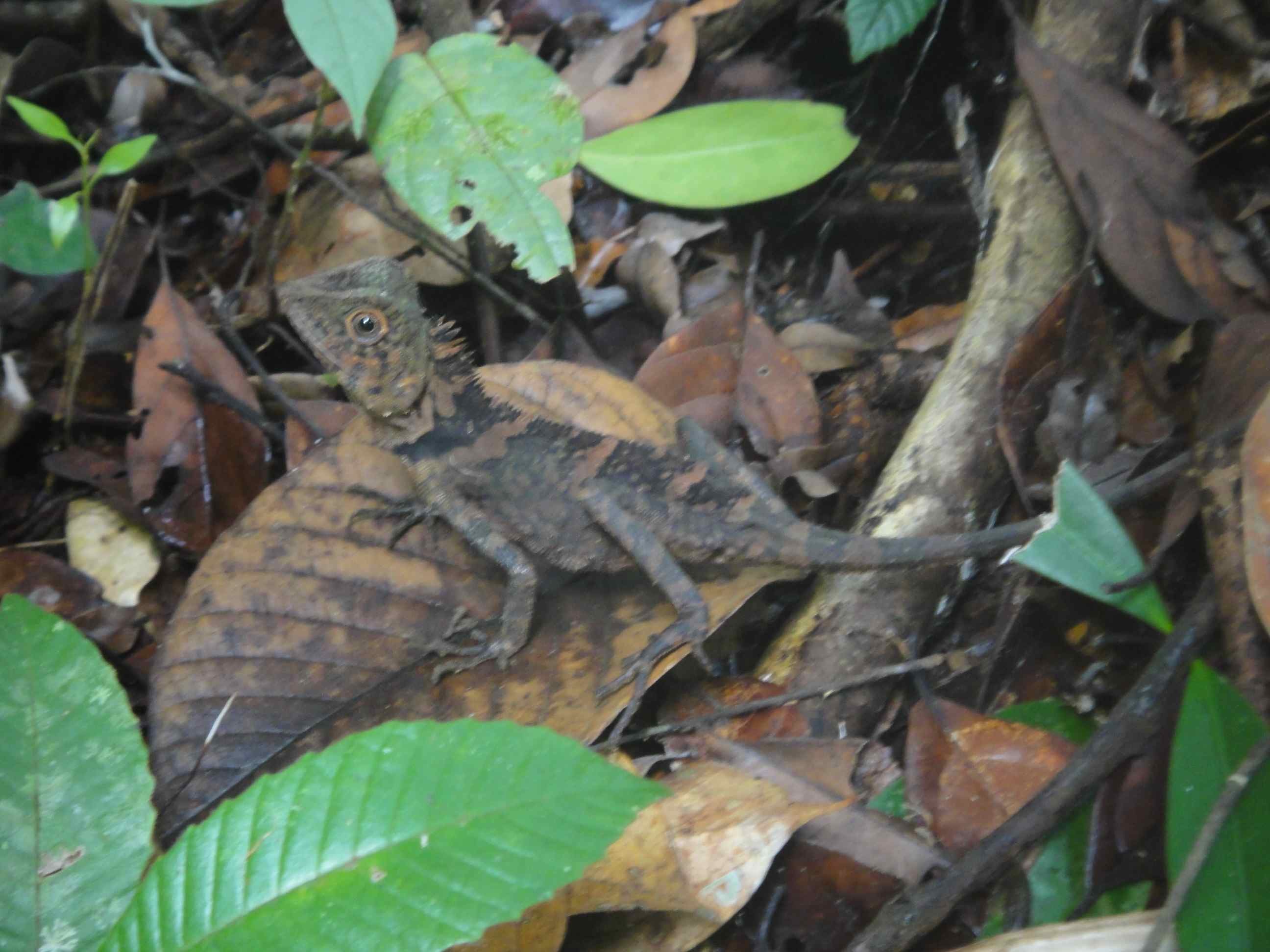
We could hear the orang utans calling in the distance. See their movement in the treetops. We caught a glimpse of a giant squirrel. Saw wild ginger, edible rattan, trees with roots far taller than an adult man. It was, in fact, rather magical.
At least until the leech…
Now, when it comes to wildlife, Borneo is famous for orang utans (which are native to here and the Indonesian island of Sumatra). And, err, leeches.
During the rainy season, these evil little parasites hang, curled up, from leaves above the path waiting to drop on an unsuspecting host, or lurk in puddles ready to crawl through the eye of a shoe, release their local anaesthetic and anticoagulant, then feed until dislodged.
We hadn’t come to the centre to trek. So we were not, to put it mildly, appropriately clad. And, sadly, it was the nine-year-old whose sandaled foot got the leech treatment first.
Now, Z is pretty damn resilient most of the time. I can confirm, however, that leeches are some way outside his comfort zone.
By the time he met the inch-long ants, he was not a happy bunny.
Not at all.
Mercifully, Borneo is rich in pitcher plants. Those amazing carnivorous flora, in gaudy shades of scarlet, pink and green, trap insects in their cups before slowly digesting them in the pool of acid at the base.
Sir has been wanting to feed an ant to one for several months now. And, after capturing a little ant, placing it on the pitcher plant, and watching its all-too predictable fate, his humour was fully restored.
As my ma said, “You’ll never make a Buddhist of him, you know.”
Anywise…
We are heading upriver tomorrow morning — a word which always makes me think of Michael Sheen in Apocalypse Now, explaining his mission to some tripped-out guard — along the Batang Rejang, AKA the Amazon of Borneo.
We’re aiming for Kapit, a trading town deep in the forested interior of Sarawak, where we’ll spend a few days exploring the tributaries and longhouses, and getting to know some of the indigenous tribes, before shooting the Pelagus Rapids and looping back towards civilisation.
I’ll let you know how we get on. But it may be a few days before I do…

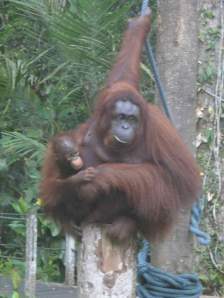
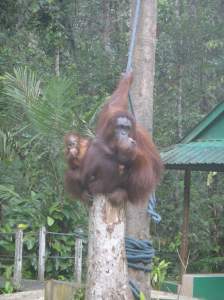
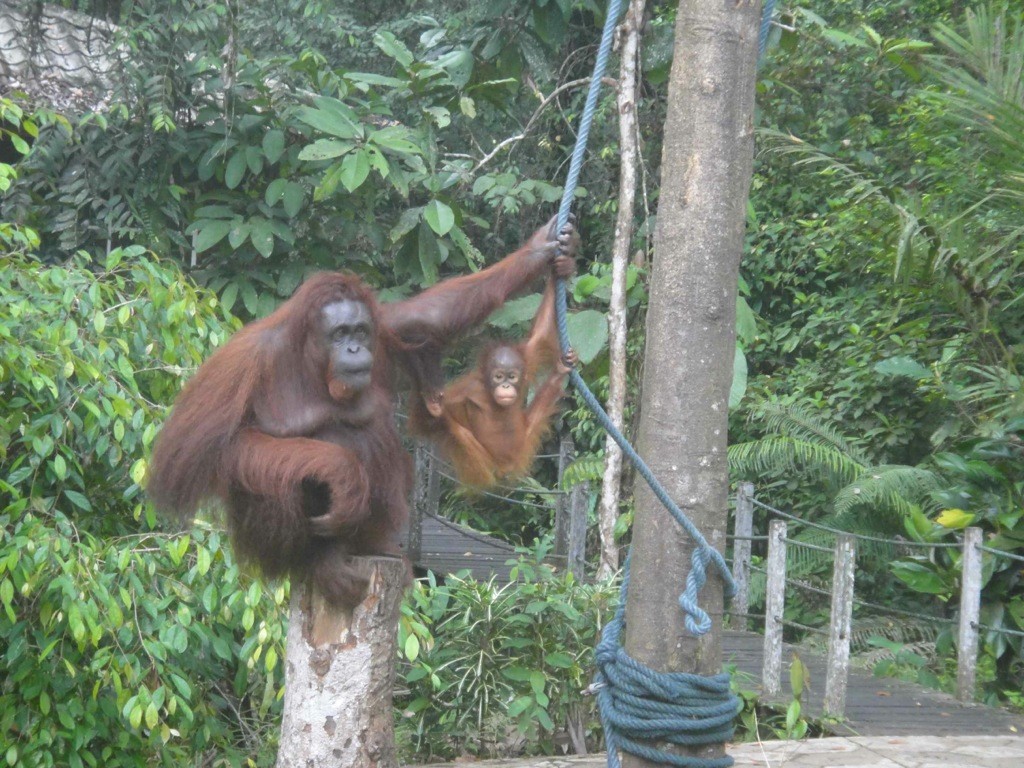
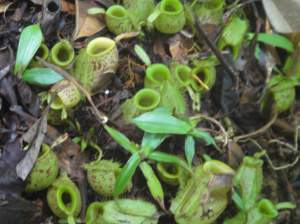
Like the new look:)